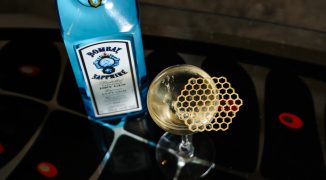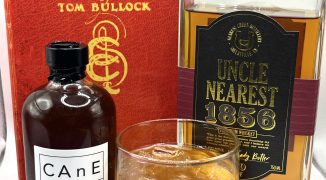Sugar is pure sweetness, and as such is one of the five basic flavors. In “On Food and Cooking,” Harold McGee introduces it as “an extraordinary food” and “the taste of energy that fuels all life.” At one time, it was a luxury only for the rich, but now it’s found in a very large percentage of pre-made food—and, as consumption of sugar has been linked to obesity, diabetes, cardio vascular disease, and dementia, it’s been called the most addictive drug in existence. Today, many popular nutritionists, diets and cleanses advocate cutting out refined sugar entirely.
Despite the concerns, it’s still present behind every bar. It’s the foundation for simple syrups, flavored liqueurs and some flavored vodkas. There’s even a tiny bit added to bitters. Needless to say, sugar adds something fundamental to a drink.
It’s so important, in fact, that it’s one of the four ingredients named in the 1806 definition of a cocktail given by The Balance and Columbian Repository along with “a stimulating liquor,” water, and bitters. In this basic mix, it smooths the burn of alcohol, adds a silky texture and helps balance the drink.
Like salt, refined sugar is also considered to be a flavor enhancer, but this quality may stem from the texture it creates. “For me, the use of sugar is synonymous with cocktails,” says Claire Smith-Warner, Belvedere Vodka’s head of spirit creation and mixology. “However, there is an argument to suggest that with the rise of well-made spirits, the default levels of sweetener used in some cocktails could be addressed.”
High School Science Recap
On a molecular level, refined sugar is a 50-50 mix of two simple sugars: glucose and fructose. The human body requires glucose to function, either by consuming it or producing it.
Fructose, on the other hand, is thought to be the more dangerous sugar. Fructose is present in many fruits and is often called “fruit sugar.” But fruits naturally contain vitamins, minerals and enzymes that help the body process this sugar. Once it’s refined, it’s no longer healthy.
It’s also metabolized through the liver. “If the liver is overloaded, it will store the excess energy as subcutaneous fat which sits around the heart, brain, and other vital internal organs,” says Smith-Warner. “The truth is that [any fruit juice] will place additional stress on your liver if you’re drinking a glass (or 3) after a big night out.”
Interestingly, high fructose corn syrup is about 55 percent fructose and 45 percent glucose. Honey is roughly a 1:1 ratio of dextrose to fructose. Agave clocks in at about 90 percent fructose, and “should be avoided at all costs,” says Smith-Warner.
Rethinking Sweet
Maintaining a cocktail’s balance while lowering the sugar content can be a tricky proposition, but it can be done. Even though artificial sweeteners like Splenda may be the go-to for guests with diabetes or other dietary restrictions, they usually don’t produce the same effects on texture and the alcohol’s burn.
To recreate that rich texture, try fat washing the spirit or blending coconut flesh into the cocktail, says Smith-Warner. Another option to recreate the texture is to blend in whole fruits instead of just using the juice, which increases the fiber-to-sugar ratio.
Other tricks for making drinks seem sweeter without adding a lot of sugar include using common baking spices such as cinnamon, vanilla, or nutmeg. “These all increase the perception of sweetness in cocktails,” says Smith-Warner.
Additional recommendations include substituting a pomegranate juice reduction for grenadine or Crème de Cassis and replacing ginger syrups with housemade ginger beer.
Since tonic water is high in sugar, it can be cut with soda water. When sugar is necessary, using a monk fruit and rice malt syrup or powdered glucose all work well, says Smith-Warner. But if all else fails, make it red: Claire cites a study that found red drinks are perceived to be approximately 17 percent sweeter.
The larger conversation about sugar is already changing how we make drinks. The Springs, a holistic wellness center in L.A., has already developed a low-sugar cocktail, says Smith-Warner. Elsewhere, bartenders are using healthier ingredients to balance their drinks. As it turns out, you can have your diet and drink it too. All it takes is a little imagination.





